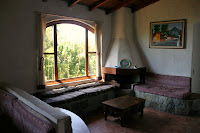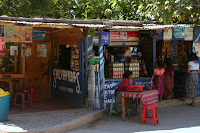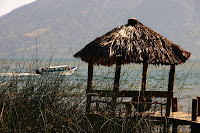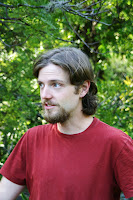 Escuela Caracol, founded in 2007 by Josh and Courtney, is an elementary school that provides holistic, multi-lingual, intercultural, and arts-integrated education for children of the Lake Atitlan Region. The goal is to develop the “whole” child to include head, heart,
Escuela Caracol, founded in 2007 by Josh and Courtney, is an elementary school that provides holistic, multi-lingual, intercultural, and arts-integrated education for children of the Lake Atitlan Region. The goal is to develop the “whole” child to include head, heart,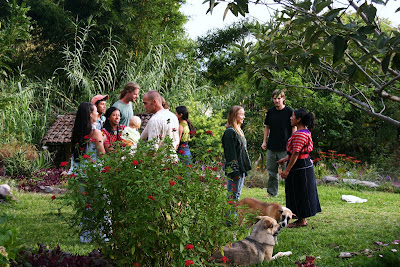 and hands. There is an effort to encourage an awareness of humanity’s place in nature and the world. Guatemala has many economic, social, and environmental needs, and the children of Escuela C
and hands. There is an effort to encourage an awareness of humanity’s place in nature and the world. Guatemala has many economic, social, and environmental needs, and the children of Escuela C aracol are made aware of the issues and possible solutions. The foundation of the curriculum is the Waldorf method, which began in Europe but is now a fast- growing international movement. The holistic educational approach promotes the development of well-rounded, free-thinking individuals who will possess creative capacities to cope with all realms of life. The curriculum introduces academics in a gradual, age-appropriate manner to help promote a life-long love of learning. Artistic impulses are addressed in every lesson, and learning becomes fun and non-competitive.
aracol are made aware of the issues and possible solutions. The foundation of the curriculum is the Waldorf method, which began in Europe but is now a fast- growing international movement. The holistic educational approach promotes the development of well-rounded, free-thinking individuals who will possess creative capacities to cope with all realms of life. The curriculum introduces academics in a gradual, age-appropriate manner to help promote a life-long love of learning. Artistic impulses are addressed in every lesson, and learning becomes fun and non-competitive.
The Waldorf method is designed to avoid burn-out. It should be noted that two thirds of the children in the region drop out of public school after the third grade. The public schools are generally regarded as over-crowded, mismanaged, and ineffectual. Escuela Caracol currently includes kindergarten and grades 1-3. As our granddaughter, Althea, age 8, advances additional grades will be added through the eighth. Twenty-three children now attend, and the student population is both indigenous and multi-national. This allows for a unique cultural interchange. Last wee
of the children in the region drop out of public school after the third grade. The public schools are generally regarded as over-crowded, mismanaged, and ineffectual. Escuela Caracol currently includes kindergarten and grades 1-3. As our granddaughter, Althea, age 8, advances additional grades will be added through the eighth. Twenty-three children now attend, and the student population is both indigenous and multi-national. This allows for a unique cultural interchange. Last wee k Josh, the quintessential director, provided a slide show of the school’s many activities for parents. The parents are so excited about the program that they sponsored a fund-raiser which we attended at an upscale local restaurant. They raised around 4000 quetzales, or $500. That goes a long way in Guatemala. Josh and Courtney are currently ready to add another open-air, classroom for kindergarten attendees. Nickolas, the grounds keeper, does a fabulous job. Rock gardens, lovely flowers, and fruit trees adorn the school property. There is even a clay oven and a decorated compost latrine made with plastic bottles and stucco.
k Josh, the quintessential director, provided a slide show of the school’s many activities for parents. The parents are so excited about the program that they sponsored a fund-raiser which we attended at an upscale local restaurant. They raised around 4000 quetzales, or $500. That goes a long way in Guatemala. Josh and Courtney are currently ready to add another open-air, classroom for kindergarten attendees. Nickolas, the grounds keeper, does a fabulous job. Rock gardens, lovely flowers, and fruit trees adorn the school property. There is even a clay oven and a decorated compost latrine made with plastic bottles and stucco.
It costs appr oximately $1000 per year to provide a private education for each child. The average indigenous worker earns around $70 per week. The only way local children can afford a quality, private education is through sponsors like us. We are so grateful that the Lord has given us so much that we can afford to sponsor two beautiful little kindergarten girls. We treated both of our girls’ families to lunch at two different restaurants, and we provided gifts for the children. Courtney’s interpretive skills helped us get to know each other. Sophia is shown at right holding her gift with her brother, Cadis, and parents, Manuel and Espiritu Santos. Her father works as a day laborer in yards and fields. Estrella’s brother is Heber, and her parents, Nacho
oximately $1000 per year to provide a private education for each child. The average indigenous worker earns around $70 per week. The only way local children can afford a quality, private education is through sponsors like us. We are so grateful that the Lord has given us so much that we can afford to sponsor two beautiful little kindergarten girls. We treated both of our girls’ families to lunch at two different restaurants, and we provided gifts for the children. Courtney’s interpretive skills helped us get to know each other. Sophia is shown at right holding her gift with her brother, Cadis, and parents, Manuel and Espiritu Santos. Her father works as a day laborer in yards and fields. Estrella’s brother is Heber, and her parents, Nacho and Lola, (bottom left) are residents of neighboring San Pablo. Nacho plays the piano, offers lessons, and works in the public school system. This family is shown at the local amp
and Lola, (bottom left) are residents of neighboring San Pablo. Nacho plays the piano, offers lessons, and works in the public school system. This family is shown at the local amp hitheatre, where we attended a musical program provided by a local arts and crafts school.
hitheatre, where we attended a musical program provided by a local arts and crafts school.
If you would like to join us in sponsoring one of these beautiful children, you will blessed as we have been. There are lots of ways to invest your money, but there are few that will benefit society and offer the kind of satisfaction we get from empowering these needy kids from a developing country. You will receive periodic photos and updates on their progress, and as they advance, they will be able to correspond with you directly. W.B. Yeats said, “Education is not the filling of a pail, but the lighting of a fire.” (www.EscuelaCaracol.org or www.info@escuelacaracol.org)




















